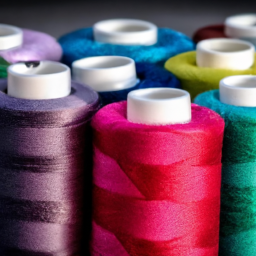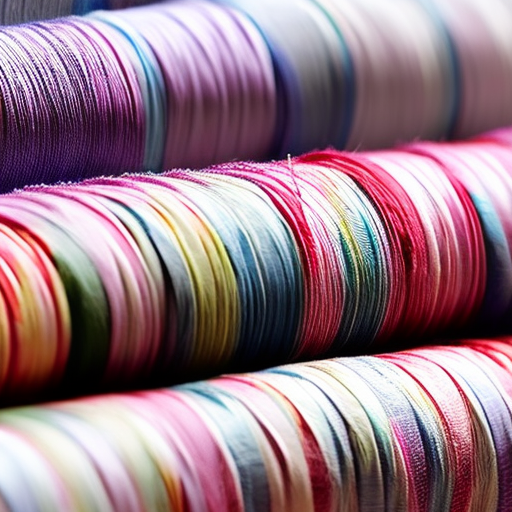

When it comes to creating beautiful and durable quilts, choosing the right thread is essential. Quilting thread is specially designed to withstand the stress of multiple layers of fabric, providing strength and longevity to your quilting projects. Whether you are a beginner or an experienced quilter, understanding the characteristics of quilt thread will help you achieve stunning results.
Types of Quilt Thread
Quilt thread comes in various materials, weights, and colors. The most commonly used materials for quilt thread are cotton, polyester, and silk. Each material has its own unique features:
- Cotton: Cotton thread is popular among quilters due to its natural fibers, which make it strong and reliable. It is loved for its ability to blend seamlessly with cotton fabrics, creating a cohesive finished look.
- Polyester: Polyester thread is known for its strength and durability. It is less likely to break or fray compared to cotton thread, making it an excellent choice for machine quilting.
- Silk: Silk thread is a luxurious option that adds a touch of elegance to your quilts. It has a natural sheen and glides smoothly through fabrics, making it ideal for detailed hand quilting.

Choosing the Right Color
The color of your quilt thread can significantly impact the overall appearance of your project. You may choose to use a thread color that blends invisibly into your quilt or a contrasting color that adds visual interest. Ultimately, the decision depends on your personal preference and the effect you want to achieve.
Pro tip:
When in doubt, opt for a neutral color that complements your quilt’s color scheme.
Thread Weight
Thread weight refers to the thickness of the thread. Quilt thread typically ranges from 30 to 60 weight, with the higher number indicating a thinner thread. The weight you choose depends on the type of quilting technique you plan to use:
- Hand Quilting: For hand quilting, a slightly thicker thread such as 40 or 50 weight is preferred as it provides better visibility and makes the quilting stitches more prominent.
- Machine Quilting: Machine quilting often requires a finer thread, such as 60 weight, which allows for smooth stitches and reduces bulk in the quilt.
Tips for Successful Quilting with Thread
- Test it Out: Before quilting your entire project, test the thread on a small sample to ensure it performs well with your chosen fabric, needle, and tension settings.
- Consider the Quilting Technique: Different quilting techniques (e.g., free-motion quilting, straight-line quilting) require different thread characteristics. Keep this in mind when selecting your quilt thread.
- Check the Quality: Invest in good-quality quilt thread to minimize fraying and breakage. Cheaper threads may lead to frustration and compromised results.
- Match the Bobbin Thread: To ensure even tension and a professional finish, use the same thread in the bobbin as you do in your quilt top.
By using the right quilt thread, you can enhance the quality and appearance of your quilting projects. Take time to experiment with different threads, colors, and weights to discover what works best for you. Happy quilting!





Ooh I love quilting!
Great idea! #lovequilting
Hector Lesley: This looks like so much fun! #sewquiltthread
Kiley Shanahan: What a great way to get creative! #creativeday
I absolutely love creating quilt projects – it’s so interesting to watch the patterns come together to make something beautiful! #happyquilting
This looks like such a great activity for a rainy day! #sewingquilting
So much potential to create something unique! #quiltingproject
Sewing and quilting is really relaxing for me! #keepcalmandsew